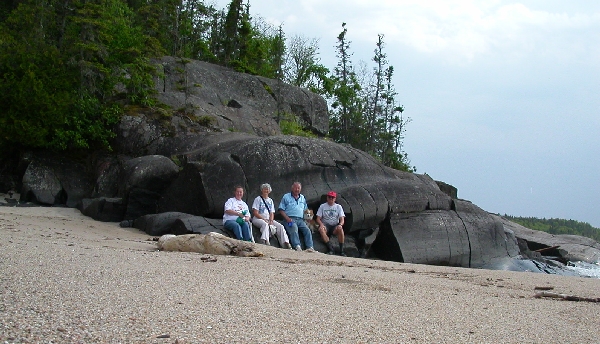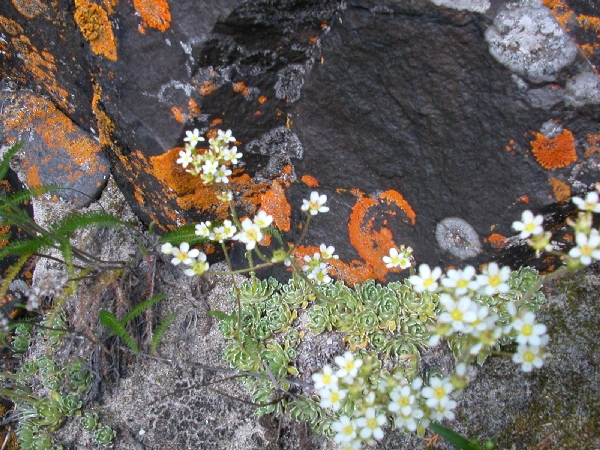We always thought Montana was a big state to cross. It takes a three hard days of driving to do it. We just finished six hard days of driving to cross Ontario Canada and we have another day to go. Our average drive has been 240 miles. Yes, I know, I have said that we didn’t want to go that fast. We would only go a couple hundred miles and then rest a day and see the sights, Well I guess after you have seen about 500 beautiful sky blue lakes and been bit by 400,000 mosquitoes you start to feel like “been there, done that.” Don’t get me wrong, there are some wonderful Provincial Parks and Pakaskwa National Park on Heron Bay was just super. I plan to place a photograph I took on our hike along the bay on the web site. It has some “Hen and chicks” succulents and orange and gray lichens on the rock that makes it a piece of abstract art. See photos at the bottom of the page.
We will once again be looking for a cyber café or library to do the e-mail and web update again tomorrow. If you get this you will know I was successful. It just a mater of logic that if you don’t get this, we were not successful. This is the same logic that my dad, Chester, used to use. The family would agree to meet along some creek for a picnic. He would always tell the other family to just watch along the road. “If we got to the spot where you turn off to go down to the creek first, we will hang a piece of toilet paper on the bush. If you get there first, take down the toilet paper.” It always seemed to make perfect sense when my dad said it.
We have found Ontario to be densely wooded, rolling hills and pocked with lakes. I guess you can take the “Minnesota, Land of 10,000 Lakes” theme and multiply it by a few dozen. Everything around Lake Superior is very sparsely settled. The small towns pop up perhaps every 30 to 50 miles. Many of the roads are narrow and rough so you have to be very vigilant as you drive these big RV’s down the road. We have noticed that there is a local obsession with balancing rocks. There are many rock outcropping in this country. Perhaps there are four of five of these alongside the road for each mile of road that we travel. Perched precariously on top of the cut-bank will be an artistic pile of balanced rocks. They are obviously placed there intentionally by someone, and in a prominent place so they can be seen and admired as you pass by. Some have the shape of a gnome with two legs and a hat. Occasionally they will include sticks or twigs to develop the shape. Many are balanced quite precariously and each is unique unto itself. We have discovered that these are called Inukshuks and it is an Inuit traditional way of showing the way.
We have been doing a combination of some private parks along with the Provincial and National parks. All of the provincial parks jumped their prices this year, so they are actually more expensive than the private parks and offer fewer services. What you do get is elbow room. The sites are carved out of the forest and are parks with hiking trails and natural places. The private campgrounds are usually parking lots with a few strategically placed trees, horseshoe pits, boats for rent and a list of rules as long as your arm.
Judy and I send along our love to all our friends and relations. Bye for now.

